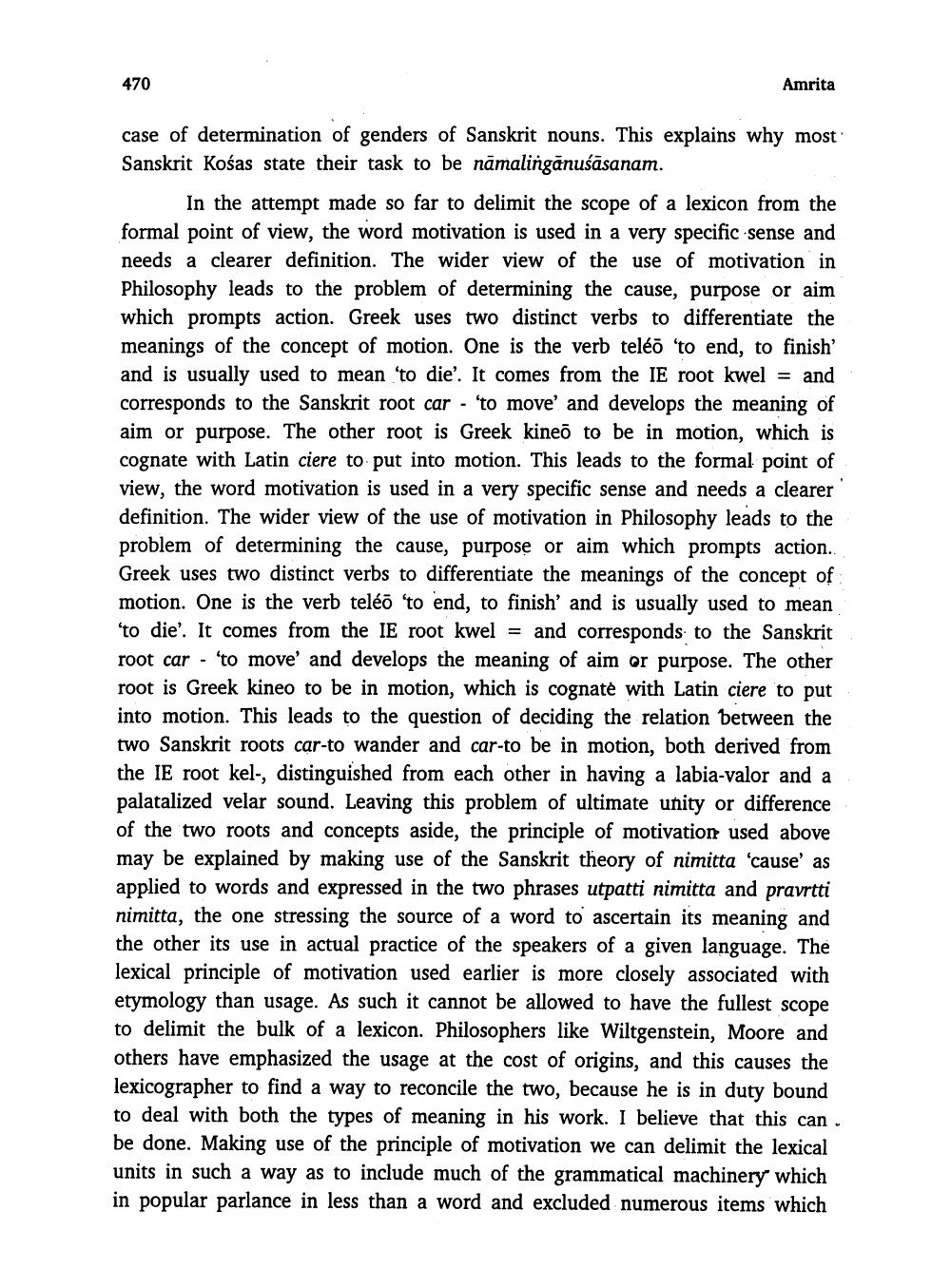________________
470
Amrita
case of determination of genders of Sanskrit nouns. This explains why most Sanskrit Kosas state their task to be nämalingānuśāsanam.
In the attempt made so far to delimit the scope of a lexicon from the formal point of view, the word motivation is used in a very specific sense and needs a clearer definition. The wider view of the use of motivation in Philosophy leads to the problem of determining the cause, purpose or aim which prompts action. Greek uses two distinct verbs to differentiate the meanings of the concept of motion. One is the verb teléō 'to end, to finish' and is usually used to mean 'to die'. It comes from the IE root kwel = and corresponds to the Sanskrit root car to move' and develops the meaning of aim or purpose. The other root is Greek kineō to be in motion, which is cognate with Latin ciere to put into motion. This leads to the formal point of view, the word motivation is used in a very specific sense and needs a clearer definition. The wider view of the use of motivation in Philosophy leads to the problem of determining the cause, purpose or aim which prompts action.. Greek uses two distinct verbs to differentiate the meanings of the concept of motion. One is the verb teléō 'to end, to finish' and is usually used to mean 'to die'. It comes from the IE root kwel and corresponds to the Sanskrit root car to move' and develops the meaning of aim or purpose. The other root is Greek kineo to be in motion, which is cognate with Latin ciere to put into motion. This leads to the question of deciding the relation between the two Sanskrit roots car-to wander and car-to be in motion, both derived from the IE root kel-, distinguished from each other in having a labia-valor and a palatalized velar sound. Leaving this problem of ultimate unity or difference of the two roots and concepts aside, the principle of motivation used above may be explained by making use of the Sanskrit theory of nimitta 'cause' as applied to words and expressed in the two phrases utpatti nimitta and pravrtti nimitta, the one stressing the source of a word to ascertain its meaning and the other its use in actual practice of the speakers of a given language. The lexical principle of motivation used earlier is more closely associated with etymology than usage. As such it cannot be allowed to have the fullest scope to delimit the bulk of a lexicon. Philosophers like Wiltgenstein, Moore and others have emphasized the usage at the cost of origins, and this causes the lexicographer to find a way to reconcile the two, because he is in duty bound to deal with both the types of meaning in his work. I believe that this can. be done. Making use of the principle of motivation we can delimit the lexical units in such a way as to include much of the grammatical machinery which in popular parlance in less than a word and excluded numerous items which
-




